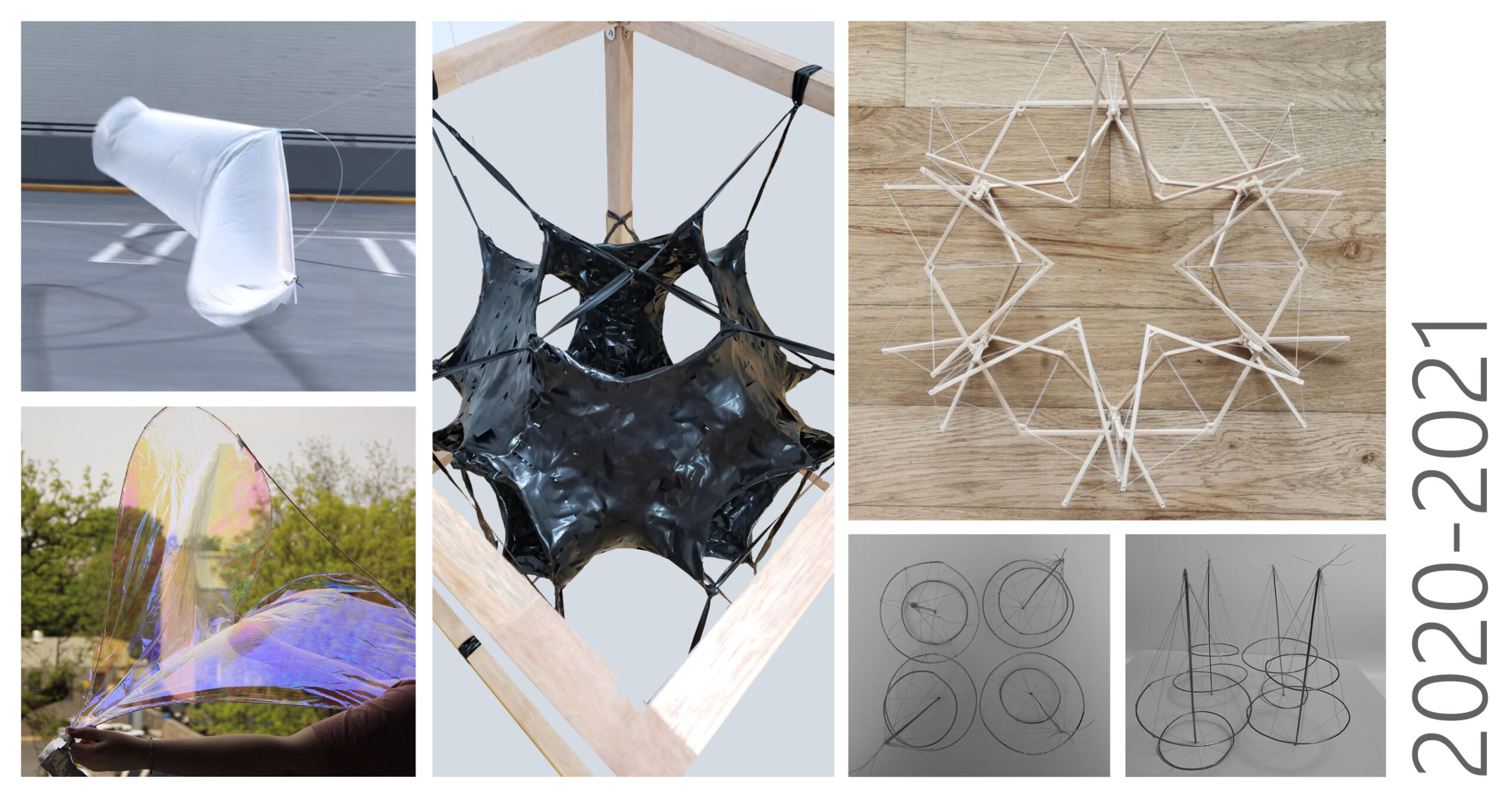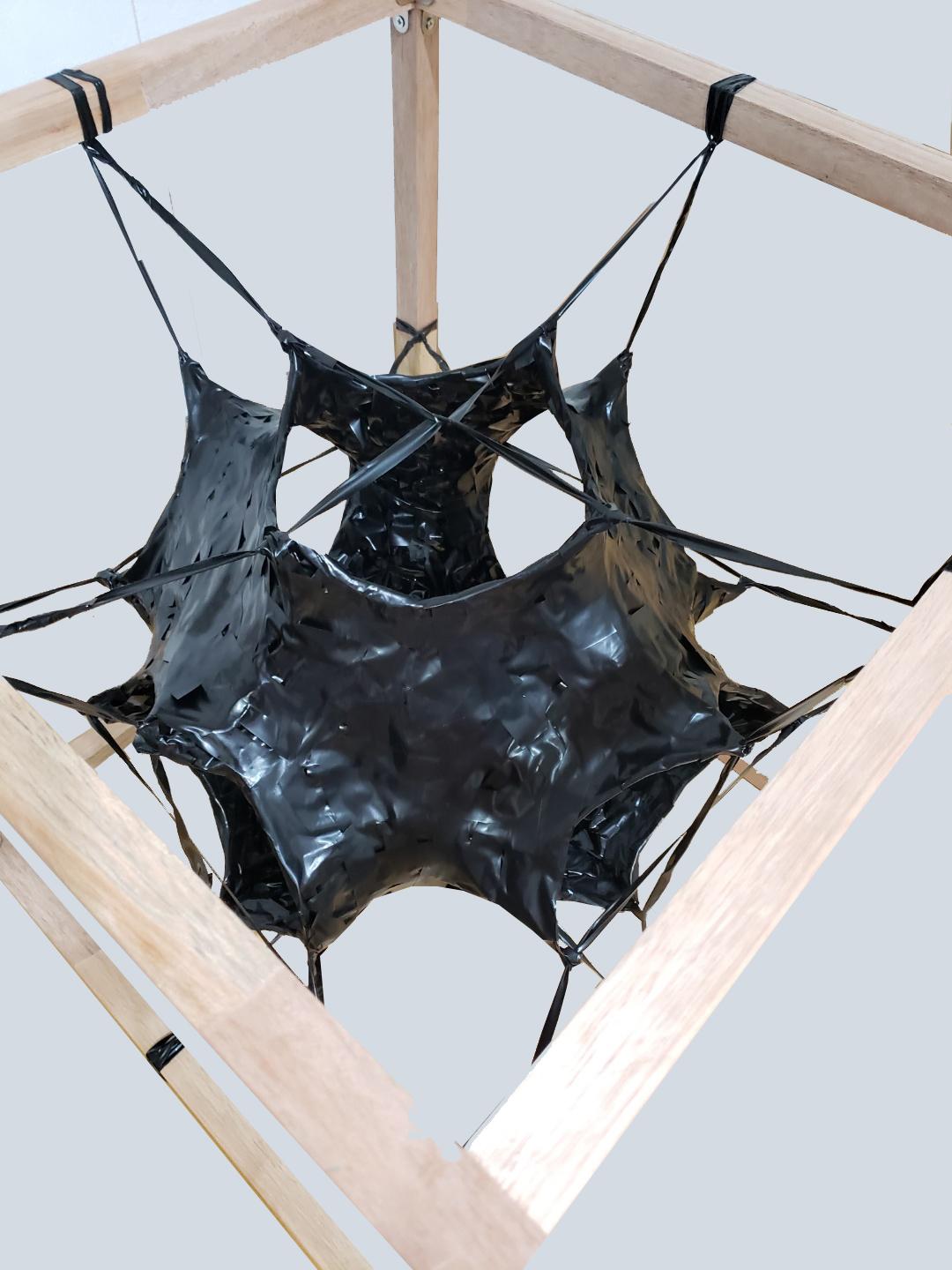Morphology Studios 2020-2021

TRANSFORMING KITES
Over the course of this semester, students were challenged to design and build a transforming kite. The kite could either transform mid-air as the kite is being deployed (tossed up into air) or transform while flying far up in the sky. Students developed and improved several mechanisms each week as they simultaneously grappled with designing and building lightweight structures with the right aerodynamics to fly in various wind conditions.


[Credits:]
Faculty: Che-Wei Wang
Students: Maika Yoshikawa (1), Ashkan Eslami Fard (2)
TAPE-WOUND TOPOLOGIES
In this course, students explored tape-winding as a method for constructing complex surface curvature. Inspired by the logics of spider web construction, minimal surfaces were constructed with winding sequences derived from each surface topology.




[Credits:]
Faculty: Ajmal Aqtash (with Robinson Strong)
Students: Maika Yoshikawa (3), Simon Salazar (4,5), Sue Kim (6)
DYNAMIC STRUCTURES
The class explores the opportunities of form finding and systems development through the research and analysis of structure, form and movement. Students use both physical modeling techniques and digital parametric modeling techniques to understand morphological form. Using the principles of origami, students identified folding techniques and explored its size, shape and movement through the use of physical modeling. Similarly, students used the principle of tensegrity, identifying the principles of equilibrium as tension and compression work together to balance a cohesive tensegrity system.

[Credits:]
Faculty: David Burke with Kyle Day
Students: Ziyu Chen (7-9), Beril Kolsal (10-13)
TENSEGRITY | TRUNCATED OCTAHEDRON
In this course, students explored morphing polyhedral cells to create new aggregations, assemblies, and ultimately new structures. Tensegrity was introduced as a tectonic constraint that allowed students to explore the relationship between compression and tension through their digital and analog models.
New methods of joinery and details were conceived through digital fabrication processes allowing the students to take ownership of how things intersect at vertices and design new ways of attachment.




[Credits:]
Faculty: John Gulliford
Students: Yue Zhao (14-17)




